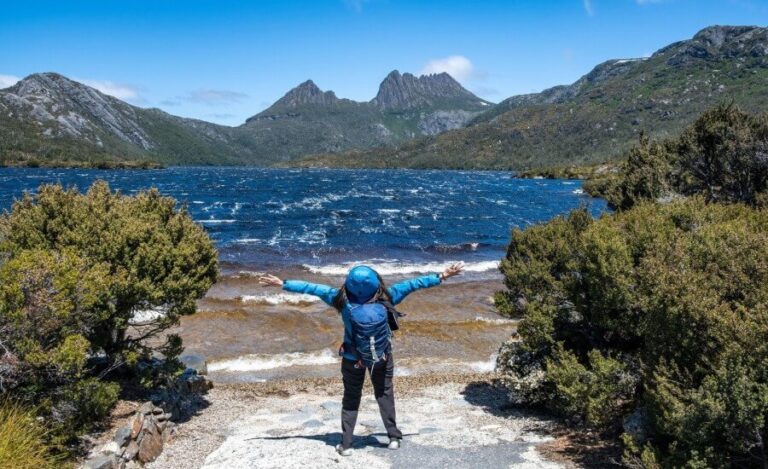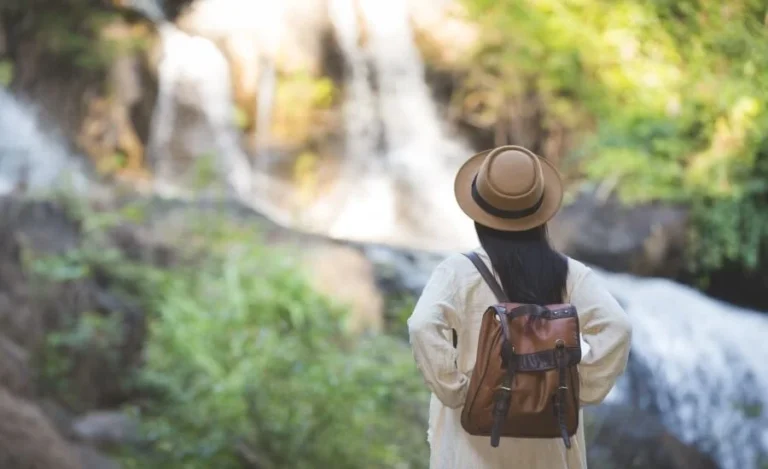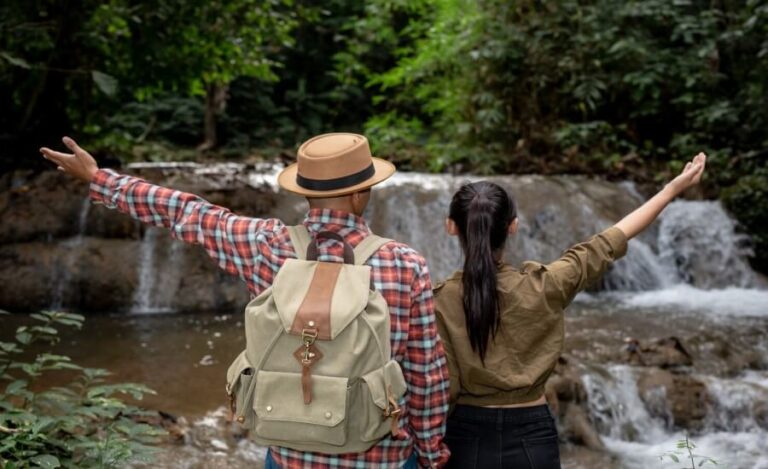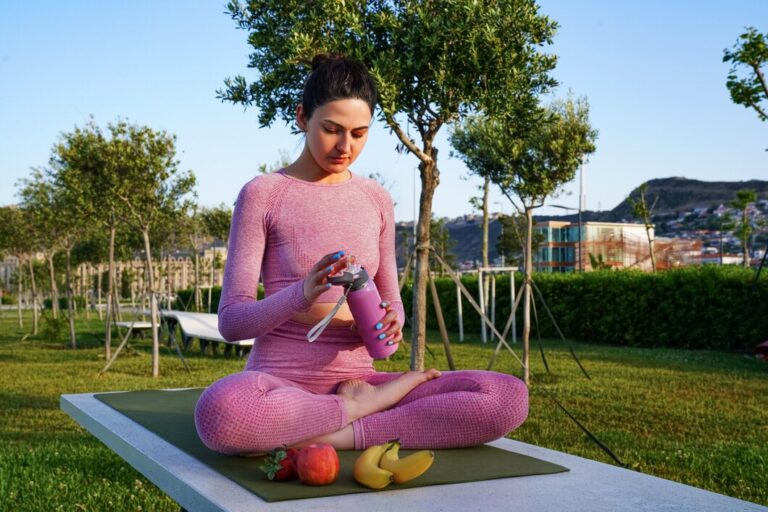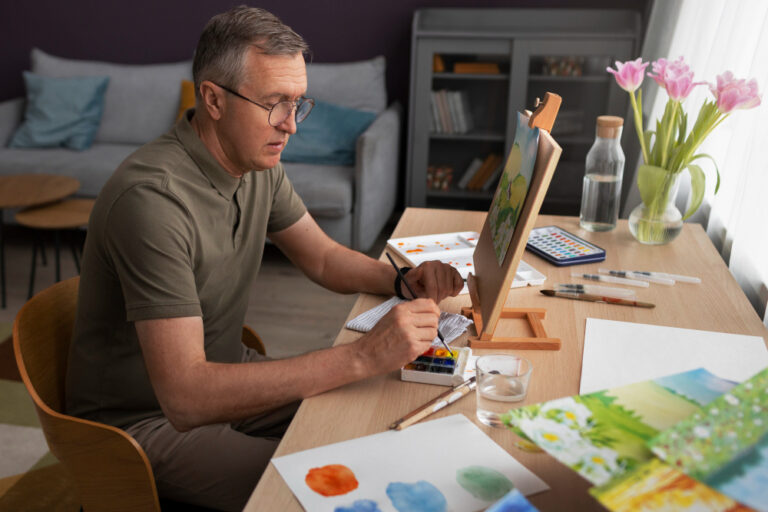
You’re standing before a breathtaking vista on your long-awaited trip, the culmination of months of planning. The air is crisp, the view magnificent… and then your phone buzzes. A work email. A social media notification. Another news alert. Suddenly, your attention snaps from the expansive landscape to the small, demanding screen. That fragile sense of presence shatters, replaced by the familiar low hum of digital obligation or distraction. Does this sound familiar? In our hyper-connected world, the constant barrage of notifications creates a significant barrier to experiencing life – especially the richness of travel – with genuine presence and awareness.
We live in an Age of Notifications, where pings, buzzes, and pop-ups constantly fragment our focus, shorten our attention spans (now often measured in seconds, not minutes), and subtly increase our stress levels. This digital static makes it increasingly challenging to simply be where we are, whether that’s in our daily lives or exploring a new corner of the globe.
This guide explores Mindfulness in the Age of Notifications: Staying Present in a Distracted World. We’ll delve into the profound power of mindfulness as an antidote, explore practical techniques for cultivating presence amidst the digital noise, and discover how embracing mindful practices, particularly during travel, can lead to deeper, more authentic, and truly restorative experiences.
Mindfulness in the Age of Notifications: A Modern Guide
Before we explore the solution, let’s acknowledge the problem. Digital notifications are designed to capture our attention – and they are incredibly effective. Each ping or buzz triggers a small dopamine hit in our brain, creating a feedback loop that encourages compulsive checking. While useful for timely information, this constant interruption comes at a cost.
Research highlights several negative impacts:
- Reduced Attention Span & Focus: Constant task-switching trains our brains for fragmented attention, making sustained focus on complex tasks, deep reading, or even engaged conversation increasingly difficult. Studies suggest even the mere presence of a smartphone nearby can reduce cognitive capacity.
- Increased Stress & Anxiety: The perpetual state of alert anticipation for the next notification can increase stress hormones like cortisol. The pressure to be constantly available and responsive adds another layer of anxiety.
- Impaired Memory & Learning: Interruptions, like notification sounds, can disrupt the process of consolidating short-term memories into long-term ones, potentially impacting learning and recall.
- Decreased Productivity: Despite the illusion of multitasking, constantly shifting attention between tasks and notifications actually reduces efficiency and increases errors.
- Shallower Connections: When our attention is divided during conversations (in person or online), we miss crucial non-verbal cues and fail to offer the full presence needed for deep connection and understanding.
Especially when traveling – a time often intended for escape, connection, or learning – this constant digital tether can prevent us from fully immersing ourselves in the experience, keeping our minds tethered elsewhere even when our bodies are in a beautiful new place.
The Power of Presence: Why Mindfulness Matters Now More Than Ever

Mindfulness offers a powerful antidote to the distraction epidemic. At its core, mindfulness is the practice of paying attention intentionally, in the present moment, without judgment. It’s about cultivating awareness of your thoughts, feelings, bodily sensations, and surroundings, right here, right now. It’s not about emptying your mind, but about changing your relationship to your thoughts and the world around you.
In the face of constant digital stimulation pulling our attention outward and fragmenting our focus, mindfulness cultivates the inner skills needed to regain control and choose where we place our awareness. Its scientifically-backed benefits directly counter the negative impacts of digital distraction:
- Stress Reduction: Mindfulness practices calm the nervous system and reduce stress hormones.
- Improved Focus & Attention: Training the mind to stay present strengthens our ability to concentrate and resist distractions.
- Emotional Regulation: Mindfulness helps us observe emotions without immediate reaction, reducing reactivity and fostering balance.
- Enhanced Self-Awareness: It allows us to better understand our own thought patterns, biases, and triggers.
- Increased Appreciation & Gratitude: Paying full attention to the present moment allows us to savor simple pleasures and cultivate gratitude for our experiences.
- Deeper Connections: Being fully present when interacting with others fosters empathy, improves listening, and strengthens relationships.
Cultivating mindfulness isn’t about adding another task to your list; it’s about learning to inhabit your life – and your travels – more fully and consciously. It’s reclaiming your attention, which is arguably your most valuable resource.
Finding Stillness Amidst the Static: Foundational Mindfulness Techniques

Mindfulness is a skill, and like any skill, it strengthens with practice. Fortunately, many simple yet powerful techniques can be integrated into daily life, helping you build your ‘presence muscle’.
- Mindful Breathing: This is the cornerstone. Simply bringing gentle, non-judgmental awareness to the physical sensation of your breath – the air entering your nostrils, the rise and fall of your chest or abdomen. When your mind wanders (which it will!), gently guide it back to the breath. Even one minute can make a difference.
- Body Scan Meditation: Systematically bring awareness to different parts of your body, from toes to head, noticing any sensations (warmth, tingling, tension, contact) without trying to change anything. This grounds you in physical reality.
- Mindful Observation (Sensory Check-in): Pause wherever you are and consciously engage your senses. What are five things you can see right now? Four things you can physically feel? Three things you can hear? Two things you can smell? One thing you can taste? This simple exercise anchors you immediately in the present environment.
- Mindful Walking: Pay attention to the physical sensations of walking – your feet connecting with the ground, the movement of your body, the sights and sounds around you – rather than being lost in thought.
- Mindful Eating: Slow down during meals. Notice the colors, textures, smells, and tastes of your food. Pay attention to the sensation of chewing and swallowing. Put down utensils between bites.
Key Points for Practice:
- Start Small: Begin with just 5 minutes a day. Consistency is more important than duration initially.
- Be Kind: Don’t judge yourself when your mind wanders. Gently redirecting your attention is the practice.
- Integrate Informally: Look for opportunities to bring mindful awareness to everyday activities like washing dishes, brushing your teeth, or waiting in line.
Mindfulness on the Move: Applying Practices While Traveling

Travel provides rich opportunities to practice mindfulness, transforming potentially stressful or rushed experiences into moments of presence and discovery. Instead of letting the journey be a blur between destinations, infuse it with awareness.
- Mindful Transit: Whether on a plane, train, bus, or even waiting at a gate, use the ‘in-between’ time. Notice the sensations of movement, look out the window with open curiosity (instead of scrolling), listen to the ambient sounds, or practice mindful breathing. See travel time as part of the experience, not just something to endure.
- Sensory Arrival: When you first arrive in a new place (hotel room, city square, nature spot), take a few moments to consciously engage all your senses. What are the unique sights, sounds, smells, textures, and tastes of this specific location? Let the place imprint itself on your awareness before rushing to ‘do’ something.
- Mindful Walking Exploration: Explore a new town or natural area by walking slowly, without a rigid destination. Let your curiosity guide you. Pay attention to architectural details, street art, plant life, the way locals interact, the feeling of the pavement or trail beneath your feet.
- Mindful Eating (Local Cuisine): When trying local foods, slow down and truly savor the experience. Notice the presentation, aroma, flavors, and textures. Appreciate the culture and effort behind the dish.
- Dealing with Challenges Mindfully: Travel inevitably involves hiccups – delays, crowds, getting lost. Practice acknowledging frustration or anxiety without letting it overwhelm you. Use mindful breathing to stay calm. Approach problem-solving with curiosity rather than reactivity. Can you find humor or a lesson in the unexpected detour?
Applying mindfulness while traveling shifts the focus from merely consuming experiences to deeply inhabiting the journey, making it richer, less stressful, and far more memorable.
Unplugging Your Journey: Enhancing Presence Through Tech-Free Travel

While mindfulness can be practiced with technology, intentionally reducing or eliminating digital devices during travel creates the most fertile ground for deep presence and authentic connection. Going tech-free or tech-minimal removes the primary source of modern distraction, allowing your mind and senses to fully engage with the experience.
Benefits of Unplugged Travel for Presence:
- Undivided Attention: Without notifications pulling you away, your focus can remain fully on your surroundings, companions, and inner experience.
- Heightened Sensory Awareness: Your senses naturally become sharper when not dulled by screen time. You notice more details, sounds, smells, and textures.
- Increased Serendipity: Without GPS dictating every turn or apps filling every spare moment, you create space for unexpected discoveries, spontaneous conversations, and happy accidents.
- Deeper Human Connection: Conversations with travel partners or locals become more engaged and meaningful without the interruption or barrier of devices.
- Enhanced Memory: Experiences lived fully through direct sensory immersion tend to create stronger, more lasting memories than those mediated or constantly documented through a screen.
- True Relaxation & Reset: Completely disconnecting from work emails, social media pressures, and news cycles allows for genuine mental rest and digital detox, leading to a more profound sense of rejuvenation.
Embracing Analog Alternatives: Rely on physical maps and a compass for navigation (builds spatial awareness!), use a traditional camera (film or simple digital) encouraging thoughtful shots, document experiences in a physical journal or sketchbook, carry a physical book, and ask locals for recommendations instead of relying solely on online reviews. These analog tools foster different, often deeper, ways of engaging with your journey.
Mindful Presence Activities (Tech-Optional/Free)

Cultivating presence doesn’t require complex activities. Here are simple, tech-free (or tech-minimal) ways to practice mindfulness, especially valuable during travel downtime or moments of transition:
- Five Senses Check-in: Wherever you are (waiting for a bus, sitting in a cafe, resting on a trail), pause and identify: 5 things you see, 4 things you feel, 3 things you hear, 2 things you smell, 1 thing you taste (or appreciate).
- Mindful Observation: Choose one object (a flower, a stone, a building facade, a cup of coffee) and observe it intently for a few minutes using all relevant senses. Notice details you might normally overlook.
- Nature Gazing: Find a spot with a natural view (even a single tree outside a window). Simply gaze softly, noticing light, shadow, movement, textures without needing to label or analyze.
- Cloud Watching: Lie back and watch the clouds drift and change shape. Let your imagination play without goal or judgment.
- Journaling Observations: Dedicate journal entries not just to events, but to sensory details or feelings experienced during the day. “Today, the rain smelled like…” or “Sitting by the river felt…”
- Single-Task Focus: Intentionally do one thing at a time. If you’re eating, just eat. If you’re walking, just walk. Resist the urge to layer activities or check your phone simultaneously.
- Listen Deeply: Practice active listening (see previous post!) in your next conversation, putting away distractions and fully focusing on the other person.
These simple practices train your attention and anchor you in the present moment, building resilience against the pull of digital distractions.
Common Concerns & Solutions for Cultivating Presence

Trying to be more mindful in our notification-saturated world can feel challenging. Here are common concerns:
Concern 1: “I get distracted so easily; my mind constantly wanders.”
- Solution: That’s normal! The goal isn’t to stop thoughts, but to notice when your mind wanders and gently bring it back without self-criticism. Each time you bring it back, you strengthen your focus muscle. Start with very short practice periods (1-3 minutes).
Concern 2: “Mindfulness/meditation feels boring or difficult.”
- Solution: Reframe ‘boring’ as ‘calm’ or ‘simple’. Find a technique that resonates – maybe mindful walking feels better than sitting meditation, or focusing on sounds is easier than breath. Use guided meditations initially (many apps exist, paradoxically – use them intentionally!). Don’t strive for a ‘special’ state; just practice gentle awareness.
Concern 3: “I’ll miss important information or opportunities if I disconnect / FOMO.”
- Solution: Differentiate between truly urgent and merely ‘loud’. Most notifications aren’t critical. Set specific, limited times to check essential communication, then fully disconnect otherwise. Communicate your boundaries to others. Recognize that the ‘fear of missing out’ online often causes you to miss out on your actual life and travels. What you gain in presence often outweighs what you might ‘miss’ online.
Concern 4: “I need my phone for travel logistics (maps, bookings, translations).”
- Solution: True, tech can be very helpful. Practice mindful tech use. Use apps purposefully for specific tasks, then put the phone away. Download maps offline. Print confirmations. Carry a basic phrasebook. Challenge yourself to use tech less – maybe navigate one leg of a journey with a paper map, or ask for directions instead of using GPS. It’s about reducing compulsive use, not necessarily eliminating useful tools entirely.
Mindful Travel Preparation Checklist

Set the stage for a more present journey with this checklist:
- Set Your Intention: Clearly define your goal for the trip – relaxation, connection, learning, adventure? Add an intention for presence (“I intend to be fully present,” “I will minimize digital distractions”).
- Plan Tech Boundaries: Decide before you go how you’ll manage notifications and screen time. Will you turn off certain apps? Set usage timers? Have tech-free periods? Communicate this plan to relevant people.
- Pack Analog Tools: Include a physical journal & pen, a book, maybe a simple map of the area, a deck of cards, or sketchbook.
- Download Offline Essentials: If using tech for logistics, download maps, booking confirmations, podcasts, music, or guides before the trip so you don’t need constant connectivity.
- Prepare Your Mind: Practice short mindfulness exercises in the days leading up to your trip.
- Inform Key Contacts: Let essential people know you may be less reachable and provide emergency contact info if necessary. Set up OOO replies.
- Pack Light (Mentally Too): Try to leave work worries and mental clutter behind. Give yourself permission to simply be on vacation.
- Cultivate Curiosity: Pack an open mind and a willingness to engage with your surroundings directly.
Reclaim Your Attention, Reclaim Your Life

We live in an unprecedented Age of Notifications, a time where our attention is constantly fragmented and commodified. But we are not powerless. Mindfulness offers practical tools and a powerful philosophy for reclaiming our focus, finding stillness amidst the digital static, and choosing presence over distraction.
By cultivating awareness, managing our relationship with technology intentionally, and prioritizing direct experience, we can navigate this challenging landscape with greater calm and clarity.
Applying these principles to travel transforms our journeys. It shifts the focus from collecting destinations to collecting moments, from consuming sights to connecting with experiences.
Choosing to unplug, even partially, allows the world to reveal itself in richer detail, fostering deeper connections with places, people, and ourselves. You now have a toolkit of mindfulness techniques and practical strategies to begin this practice, both at home and on the move.
What is one notification you can silence today? What is one moment you can choose to be fully present for? Start there. The journey of staying present in a distracted world is ongoing, but every conscious breath, every moment of awareness, every intentional disconnection is a step towards reclaiming your attention and truly inhabiting your one precious life.
